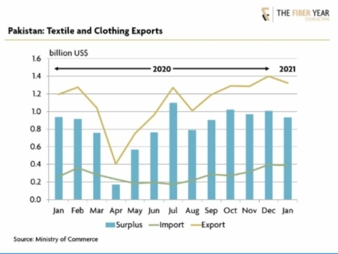
Political factors affecting Pakistan
The political instability in Pakistan is largely due to a lack of a unified national political party. The country relies on the army and civil service to keep its government stable and impartial. However, it has also suffered from a political culture that is dominated by patronage and power. The most serious factor, however, is the absence of an independent judiciary. This is a serious problem for the country’s economy.
The diverse nature of Pakistan’s provinces has contributed to risk aversion, which is problematic for the central authority. This was particularly true when the Muslim League created a centralized government in Karachi, but these leaders were civil servants who were trained in the British administration. The structure of the Muslim League was also weak and lacked a central administrative apparatus. The presence of millions of refugees has made it imperative for the central government to move quickly and take action. Despite these limitations, the state has a good track record in addressing humanitarian needs.

The state’s bicameral federal legislature is composed of two houses, the Senate and the National Assembly. The Senate is the upper house, while the National Assembly is the lower house. A body of advisers is called the Majlis-e-Shoora. There is no formal recall system in Pakistan, but past governments have been ousted for corruption by invoking Article 58 of the Constitution. The Thirteenth Amendment removed the Prime Minister’s power to dissolve the National Parliament, but the Seventeenth Amendment restored it partially.
Economic factors affecting Pakistan

Inflation is the key driver of the Pakistani economy. Inflation is the percentage of the economy that increases year-over-year, and in the last four years, the country has experienced a 5% growth rate on average. However, the country is facing a payments crisis due to a growing debt and a heightened inflationary risk. The government is heavily dependent on external debt bailouts to keep the economy running, and this has increased its dependence on debt. In the past, Pakistan has struggled with macroeconomic crises, including currency devaluations, current account deficits, and inflationary pressures.
Despite the recent fall in commodity prices, the Pakistani economy is still growing. The country’s regressive policies have kept prices low for several years and are responsible for increasing the country’s inflation. In addition to that, the country remains an importer of horticultural and dairy products, as well as cotton to feed its domestic textile industry. Ultimately, the economic outlook in Pakistan remains uneven and dependent on a stable currency.
The economic outlook for Pakistan is bleak. Its currency has weakened significantly since the election of the new government, while the country’s economy has experienced a string of problems. The government has been attempting to increase foreign investment, but the lack of foreign capital has hindered growth. Meanwhile, its electricity and water costs continue to rise, causing many factories to shut down. Furthermore, the economy is struggling with a huge energy shortage, which has led to a large number of job losses in the diaspora.
Social factors affecting Pakistan

A large part of Pakistan’s economy stems from the textile industry. These products are exported around the world. However, the economy of Pakistan is highly unequal, and many of its citizens live in poverty. The poor quality of education and lack of family planning have inhibited future economic development. Also, the low level of social and economic development is a blight on Pakistan’s image. Fertility is another problem in Pakistan, a combination of the psychological need for children and the limited role of women.
The country’s GDP has grown at 5.3% a year over the past decade, while its real per capita income has risen by 3.7% a year. Its rapid growth has been due to a variety of factors, including migration and the development of a new national economy. The economy is still structurally weak, and the government has faced many challenges since independence. For example, domestic debt has soared rapidly, and workers are often unable to pay their bills. In addition, the state’s reliance on soft services has led to widespread corruption.

The country’s economic performance is largely due to its large population. The average life expectancy of a male is 66 years, while the average life expectancy of a female is 68. The country also has one of the largest domestic markets in the world. This makes it a desirable destination for businesses as its workforce is inexpensive and plentiful. There are many social problems in Pakistan, including a lower standard of healthcare and unaffordable housing. Additionally, the country faces issues like terrorism and extremism, which are a blight on society.
Technological factors affecting Pakistan

In the twenty-first century, technology is one of the most important growth drivers, and the government of Pakistan needs to focus on technology and digital infrastructure while making it accessible for all. Social media platforms such as Facebook and Instagram have become popular in Pakistan, and the number of users is rising fast. However, there is still a lack of internet connectivity in some areas of the country, and the government must improve connectivity and invest in digital skills and innovation to help the country catch up with the competition.
The government should invest heavily in enhancing its IT infrastructure, and invest in developing an entrepreneurial mindset and digital skills. The country’s constitution prohibits discrimination, and it’s crucial to protect citizens from exploitation. The working day in Pakistan is eight to nine hours long, with only 12 hours of overtime allowed each week. The country also faces many challenges, including the climate, water scarcity, and pollution. Despite all these issues, Pakistan is improving its technological infrastructure and access to the internet.
The government’s initiatives to support software development and the startup culture are helping the country’s technology industry develop. With a vibrant youth population and adequate financial backing, Pakistan can create a roadmap towards breakthroughs. Similar to India and Israel, the country can benefit from the innovations of these nations. In addition to investing in technology, the government can also create R&D centers for its technical force. This will help improve their technical skills and give them practical experience. Additionally, reforming the educational system is essential for fostering innovation and improving the nation’s technological capabilities. Modernization of the curriculum will foster an environment that will enable individuals and corporations to build innovative ideas.
Environmental factors affecting Pakistan
Despite its great natural beauty, Pakistan is also a country with serious environmental issues. Its water supply is insufficient and its quality is poor, resulting in several negative effects on public health. The quality of the water has been linked to approximately 40% of the country’s diseases and deaths. Moreover, noise pollution has become a major issue in Pakistan, particularly in the city of Karachi. Recent reports indicate that noise pollution has reached critical levels in Pakistan.
This is a big problem for Pakistan. The country suffers from air pollution, caused by various sources, including vehicles and industries. Among these sources are emissions from thermal power plants and brick kilns. The chemicals released into the atmosphere are harmful to human health and damage plants. In Pakistan, the following air pollution is a problem: sulphur dioxide, carbon monoxide, and nitrogen dioxide. These pollutants have the potential to harm human health.
Deforestation in the upper reaches of the catchment areas contributes to high sediment loads in rivers. These high sediment loads reduce reservoir capacities and reduce the economic life of the system. In addition, soil erosion is a major problem in the country. These pollution issues are only one of many in Pakistan. However, they affect the health of the entire population. The problem is not confined to urban areas. As a result, there are many rural-to-urban migrations.
Legal factors affecting Pakistan

In 2016, 82% of Pakistanis reported having encountered a legal problem. The most common problems were related to public services, community resources, and consumer disputes. Only 14% of Pakistanis sought assistance from an authority. As a result, many Pakistanis had a moderate level of legal knowledge. Still, the impact of Covid-19 will likely be devastating. This article will explore the legal challenges Pakistan faces, and provide some solutions to overcome these barriers.
Media freedom is one of the biggest concerns for the country. Pakistan is home to Pakistan’s largest media conglomerate, the Jang Media Group. However, the country’s media freedoms remain under threat due to impunity. The lack of political will, delays in judicial processes, incompetence, and inadequate resources have led to a culture of impunity. While the government’s anti-corruption campaign has been effective, journalists and media workers continue to face a variety of threats.
In 2016, the government began a national campaign to ban films and media outlets that criticized Islamabad. This campaign was successful and has forced the Islamabad authorities to budge on their stances on human rights. It led to a violent mob attack on a Hindu temple, a human rights defender, and a journalist. Despite the recent improvements, many Pakistanis continue to face discrimination and violence.
References:
How and What: https://www.howandwhat.net/pestel-analysis-pakistan/
Swot and Pestle: https://swotandpestleanalysis.com/pestle-analysis-of-pakistan/



